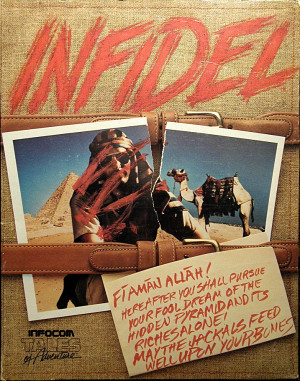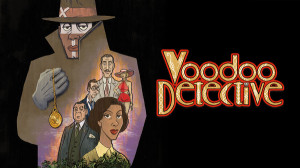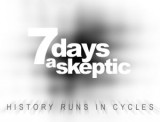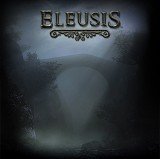FRAMED flashback review
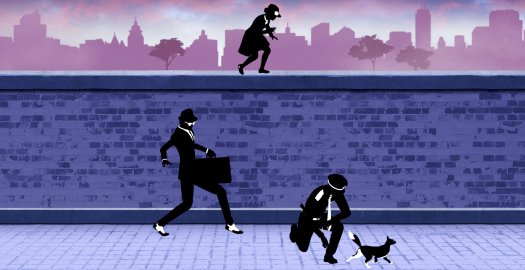
Developed by Loveshack Entertainment and published by FellowTraveller in 2014, FRAMED blends varied elements from action–adventures, interactive comics, and physics-based games. The premise involves delivering a mysterious bag across the city while avoiding the police officers who are scattered along the way. There is a short introduction, but then the game cuts right to the chase. It does not reveal anything about its protagonist's identity, the woman who hands him the bag, its contents, or even the city where the plot unfolds. There are no dialogues, journal entries, phone calls, or letters to read; nothing that will expand upon the "why" rather than the "what". The protagonist may be a hitman, a spy, or a secret agent. The woman may be a criminal, an enemy agent or simply a devout lover. Could this lack of information about the characters be considered a fundamental flaw?
FRAMED is presented in a comic book style. The hitman (protagonist) resides at the top of each page. He has to climb, run, and sneak, all the while avoiding the police officers who are lurking everywhere with their guns drawn, ready to shoot him on sight. In order for him to succeed, the comic book panels must be arranged in a particular order. On some pages, they should be rearranged again in mid-action. Otherwise, the hitman will either get stuck, be arrested, or die. There's no reason to worry, though, since the game does not end upon his arrest or death. The hitman simply reappears in the first panel, allowing you to have another go at it. There is no limit to the number of trials. You continue until you get it right. While some pages are more complicated than others, all in all FRAMED is not a particularly difficult game.
Graphics in FRAMED are rather unusual. Backgrounds are often in pastel colours, mostly shades of gray, pink and blue. They depict the unglamorous parts of a big city – back alleys, fire escape ladders, back doors, and underground stations. Against these, all characters are depicted as silhouettes, with white tints marking certain items or characteristics, such as neckties, sunglasses, hair, sideburns, cigarettes and, at some point, a hat and a coat. Animation is smooth and flowing, with attention to fine motion details, like overcoats fluttering, gusts of wind, guns being drawn, and people falling to their knees. Add to this the camera angles, which vary between sideview, top view, and isometric, and you get a feeling of watching an old, film noir classic.
An excellent, jazzy soundtrack adds to the cinematic feeling, evoking a general atmosphere of hard-boiled detectives chasing crooked criminals in grainy black and white. The music changes from time to time and occasionally loops, but the loops are relatively long and varied.
A few words about the AI: while the police officers are constantly looking for the hitman, they appear too leisurely, even oblivious to their surroundings. There are many instances when the hitman is walking right behind an officer, climbing a ladder, or sneaking through doors only a few meters away. In all those instances, the police officers don't turn their heads, scan their surroundings, move away from their position, or even budge. They do, however, notice the hitman when he is in plain view, and arrest or shoot him. When they finally get to shoot, it is always straight ahead. This not-so-intelligent AI may make the game too easy for certain players.
All the action plays out automatically. There is no pixel hunting or inventory-based puzzles for you to solve. There are two or three puzzles where the hitman uses items automatically, at the right place, without any help from the player. There are also the inevitable mazes, which are rather easy to solve. Essentially, the game seems part adventure and part interactive comic book.
As mentioned, there are no dialogues or expository information about the characters and the plot. On one hand, this means that gameplay flows nicely, and progress is not hindered by stopping for conversations or browsing endless journals. Also, this creates a universal appeal; though the first cities that come to mind are the likes of New York and Chicago, the game might take place in any major city across the globe, from Canberra to Los Angeles. On the other hand, more information would have added some depth and meaning to the chase itself and to the overall experience.
The ending is somewhat inconclusive (though there is more to look forward to in the FRAMED 2 sequel, released in 2017). First there is a false ending, after which the game continues for another few pages, which are no more than a rehash of some of the pages played earlier. These lead to the true finale, but are mostly superfluous padding.
To sum up, FRAMED's artistic qualities create a gratifying ambiance that compensates for what it lacks in both plot and characterizations. Its short length, about two to three hours, makes it feel more like a satisfying casual game than a full-blown adventure. It may serve as an "in-between" form of refreshment; one to be played when your mind needs some rest before plunging deep into more complex, plot-heavy adventures.



_capsule_fog__medium.png)





